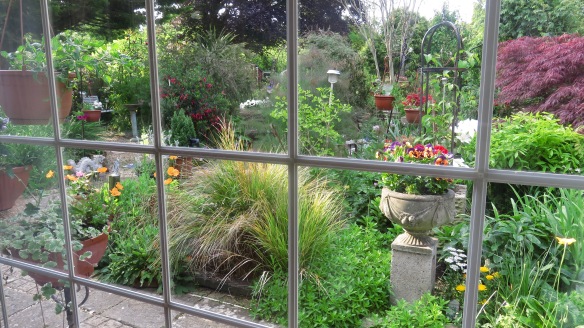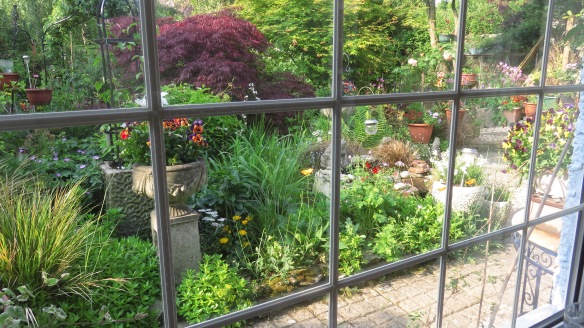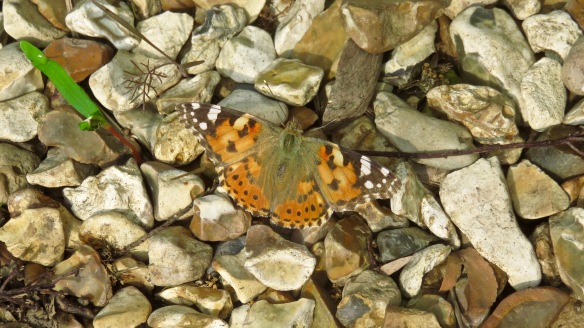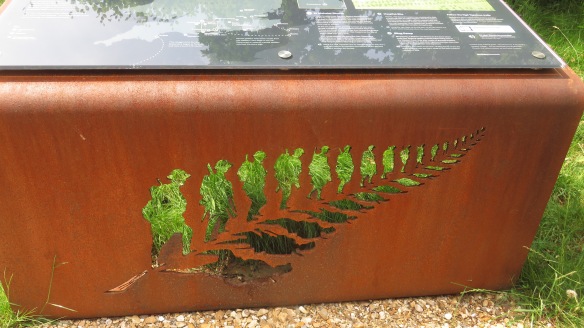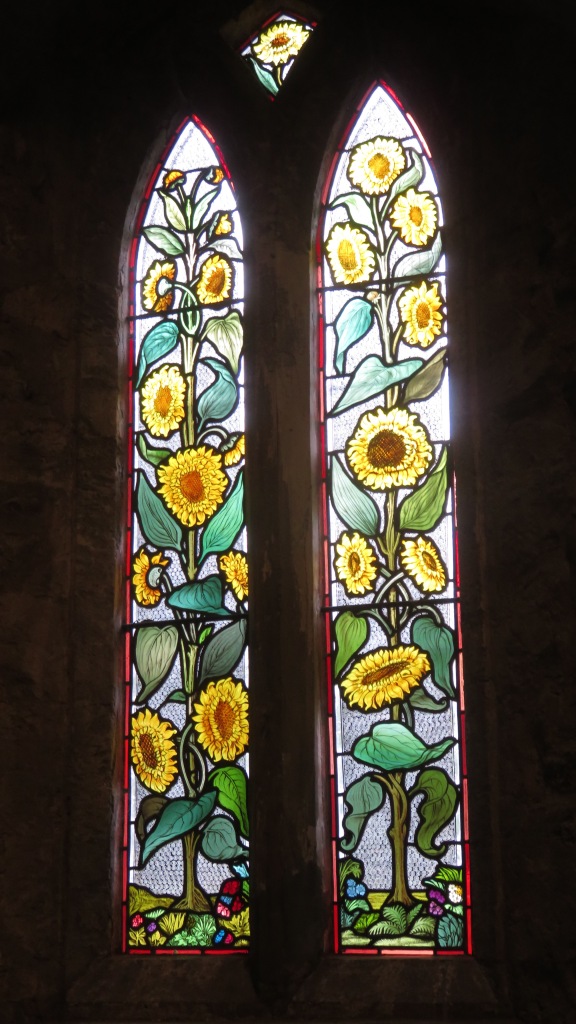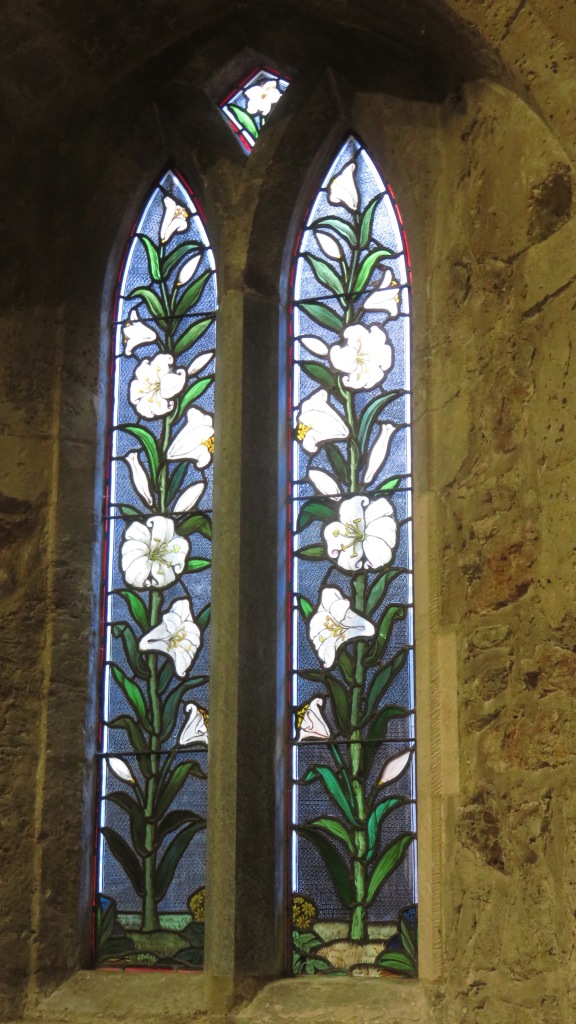CLICK ON IMAGES TO ENLARGE. REPEAT IF NECESSARY.
Over breakfast this morning, I photographed two more angles of view through the kitchen window;
and afterwards, The Rose Garden.
We have many banks of aquilegias.
Compassion blooms on the Dead End Path arch,
And we have our first bottle brush flower.
A Painted Lady butterfly availed itself of the gravel camouflage.
This afternoon we visited St Nicholas’s church in Brockenhurst. Jackie and Sheila led the way into the exhibition inside;
Jackie pausing to inspect the eighteenth century gravestones.
I wandered around the beautiful landscaped graveyard, where light glinted through trees and the ground fell away allowing the monuments to ramble down the hillside.
After my following exploration, I joined the ladies inside where a couple of volunteers within were giving them an explanatory history of the World War One burials in the churchyard.
They told Jackie that this yew tree dated from the twelfth century.
This sculptured stump must also have been a substantial giant.
Past the tree I came to a set of steps and a path leading down to level ground.
Flashes of red against clean, cream background suggested I was approaching the memorial symbolised by the sculpture at the entrance to the church. This was a brilliant fern cut out from weathered metal, familiar to anyone familiar with an All Blacks rugby jersey. The brilliance lay in the figures silhouetted in the work. I crouched a bit to ensure that the background grass made this clear.
Indeed, I had. Ninety three members of the New Zealand Expeditionary Force soldiers from World War One lie buried in the Commonwealth War Graves Commission Cemetery attached to this church.
The farming village of Brockenhurst soon became a World War 1 hospital village, from 1914 caring for wounded and sick Indian troops, and from 1916 the No. 1 HQ New Zealand hospital. Those who died therein were buried in this churchyard.
Of the 93 New Zealanders, 12 were Maoris, only one of whom died from wounds. This was Private Kiri Rapona. Clare Church’s book, which I bought, gives this young man five more years of life than does this gravestone. One other drowned and the rest succumbed to illness.
One Indian is Sukha.
There are also three unknown Belgian civilians who share a plot.
These plots are very well tended and maintained by New Zealanders in UK.
Of the three hospitals from those years, the only one still standing is now the Balmer Lawn Hotel, which keeps its own living lawnmowers.
The very friendly couple who were very informative about the church and this particular section of its history, pointed out the Victorian stained glass in the twelfth century stonework of the windows.
This evening Jackie produced succulent chicken Kiev, creamy mashed potato, and crisp carrots and runner beans for our dinner. Sheila’s dessert was rice pudding, and Jackie’s profiteroles. As I had consumed two pieces of chicken I passed on this. But I did drink more of the Fleurie. Jackie drank Hoegaarden, and Sheila, sparkling water.
It was Rupert Brooke, an Englishman who did die in 1915, who is immortalised by his own verse: ‘And if I should die, think only this of me, that there is some corner of a foreign field that is forever England’. I have adapted his words for today’s title.
